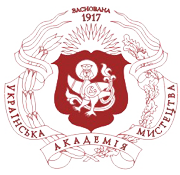THE DEVELOPMENT OF NEOEXPRESSIONISM IN THE PAINTING OF POLAND AND UKRAINE: THE EXPERIENCE OF STRUGGLE FOR DIGNITY
DOI:
https://doi.org/10.32782/naoma-bulletin-2025-3-20Keywords:
Polish New Expression, Polish and German «new wild», counterculture, transavant-garde, «unofficial art», nonconformism, intuitive neoexpressionism, M. Tregub, V. Baklytskyi, O. Minko, L. Loboda, V. Loboda.Abstract
Abstract. Ukrainian «unofficial art», which was a defining component of non-conformism in the Soviet system, like Polish artists of the New Expression in the ranks of the counterculture, requires a more thorough study of creative methods and techniques. The work of Ukrainian banned artists, which was based on foreign and domestic modernist traditions, should be considered in the context of the world artistic heritage, and thus as a phenomenon of contemporary Ukrainian art. The purpose of this study is to identify common and distinctive factors in the formation of neo-expressionist traditions in the painting of Poland and Ukraine in the last third of the twentieth century and their influence on the formation of artistic mythologies. The following methods were used to achieve the aim of the study: when considering the peculiarities of the formation of the Polish New Expression and alternative creative groups within it, the methods of historical, cultural, and interdisciplinary analysis were used. The critical and comparative method was used to determine the relationship between the art of the Polish and German New Wild. The methods of logical and art historical analysis were also used. Thanks to the method of generalization, the concept of intuitive neoexpressionism was formulated. Results. Thus, the research resulted in the following statements: the Polish New Expression within the global transavantgarde is a prominent artistic phenomenon whose artistic principles were the result of ideological considerations. This art movement united both artists and the active public, received the support of the church, and initiated the creation of alternative centers of contemporary art. According to its researchers, the formation of the artistic and figurative language of the representatives of the Polish New Expression is connected with their own avantgarde experience, the influence of the German Wild, and the focus on the creation of individual poetics. In Ukrainian art, manifestations of neoexpressionism are associated with the work of artists of «unofficial art». The forced stay in the creative underground, lack of contact with the public, ideological and physical oppression by the authorities contributed to the formation of an intuitive form of neoexpressionism. The artistic and figurative language of such artists is closely connected with worldview mythologies, which often reflected the spiritual guidelines of the Ukrainian mentality, reinforced by a number of historical tragedies. To realize their creative ideas, these artists used the avantgarde and modernist experience of both Ukrainian and foreign artists. They also used nonspecific techniques and materials to realize their artistic mythologies. Conclusions. The Polish New Expression in its heyday (1986–1989) united artists of different creative methods for the sake of the struggle for the country's independence, so it was more social in nature, which influenced the aggressiveness of the images. Neoexpressionism in the Ukrainian version was intuitive, caused by the forced creative isolation of artists (due to ideological control), who were considered to be part of the «unofficial art». In this regard, both the Polish and Ukrainian movements of Neoexpressionism have distinctive ar tistic and expressive techniques.
References
Kaczyński T. Krzysztof Stanisławski: Jestem zakochany w CSW. To najlepsza placówka w Polsce. Oto Torun.pl. URL: https://ototorun.pl/artykul/krzysztof-stanislawski-n1528303 Дата публікації: 16.02.2024 (дата звернення: 05.02.2025).
Lipsky A. Karnawał bez końca czyli o kłopotach z wolnością. Format. Pismo artystyczne. № 56. 2009. S. 4–6.
Przybysz, P.J. Stefan Morawski and Grzegorz Sztabinski: several comments on the background of Neo-avantgarde art. Art Inquiry. Recherches sur les arts. 2021. Vol. 23. P. 59–74.
Бояров А. Андрій Бояров: Це не різні культури, це все і є наша культура : [інтерв’ю] / розмову вела Катерина Яковленко. Інтерв’ю з України. URL: https://rozmova.wordpress.com/2021/09/26/andriy-boyarov/ Дата публікації: 16.09.2021 (дата звернення: 01.02.2025).
Enzo Cucchi. Galleria Mazzoli. URL: https://www.galleriamazzoli.com/en/artists/cucchi.html (дата звернення: 05.02.2025).
Szczegóła Sara. Malarstwo Nowych Dzikich. arttrakt. URL: https://arttrakt.pl/malarstwo-nowych-dzikich/ Дата публікації: 19.05.2024 (дата звернення: 05.02.2025).
Stanisławski K. Nowa ekspresja. 20 lat. Format. Pismo artystyczne. 2009. № 56. S. 7–9.
Кароль Войтила. Народження. Історія Йоана Павла ІІ : [виставка] / текст Барбари Стефанської ; Центр Думок Йоана Павла ІІ. Google Arts & Culture. URL: https://artsandculture.google.com/story/VQUBToaicSVbKg?hl=uk (дата звернення: 05.02.2025).
Zbigniew Dowgiałło – malarstwo. URL: https://www.zbigdowgiallo.com.pl/ (дата звернення: 01.02.2025).
Смирна Л. Століття нонконформізму в українському візуальному мистецтві : монографія. Київ : Фенікс, 2017. 480 с.
Історія мистецтва – український павільйон на Венеційській бієнале. URL: https://yak.koshachek.com/articles/istorija-mistectva-ukrainskij-paviljon-na.html (дата звернення: 03.02.2025).
Трегуб Микола. UU Архів. URL: https://archive-uu.com/ua/profiles/mikola-tregub (дата звернення: 03.02.2025).
Баклицький Вудон. Архів. URL: https://archive-uu.com/ua/profiles/baklic-kij-vudon (дата звернення: 03.02.2025).
Мисюга Б. Олег Мінько і його знаки. Збруч. URL: https://zbruc.eu/node/84642 Дата публікації: 15.11.2018 (дата звернення: 28.01.2025).
Завалій І. Феномен майстра: Володимир Лобода : [уривок із альбому]. ArtHuss. URL: https://www.arthuss.com.ua/books-blog/fenomen-maystra-volodymyr-loboda (дата звернення: 07.03.2025).








